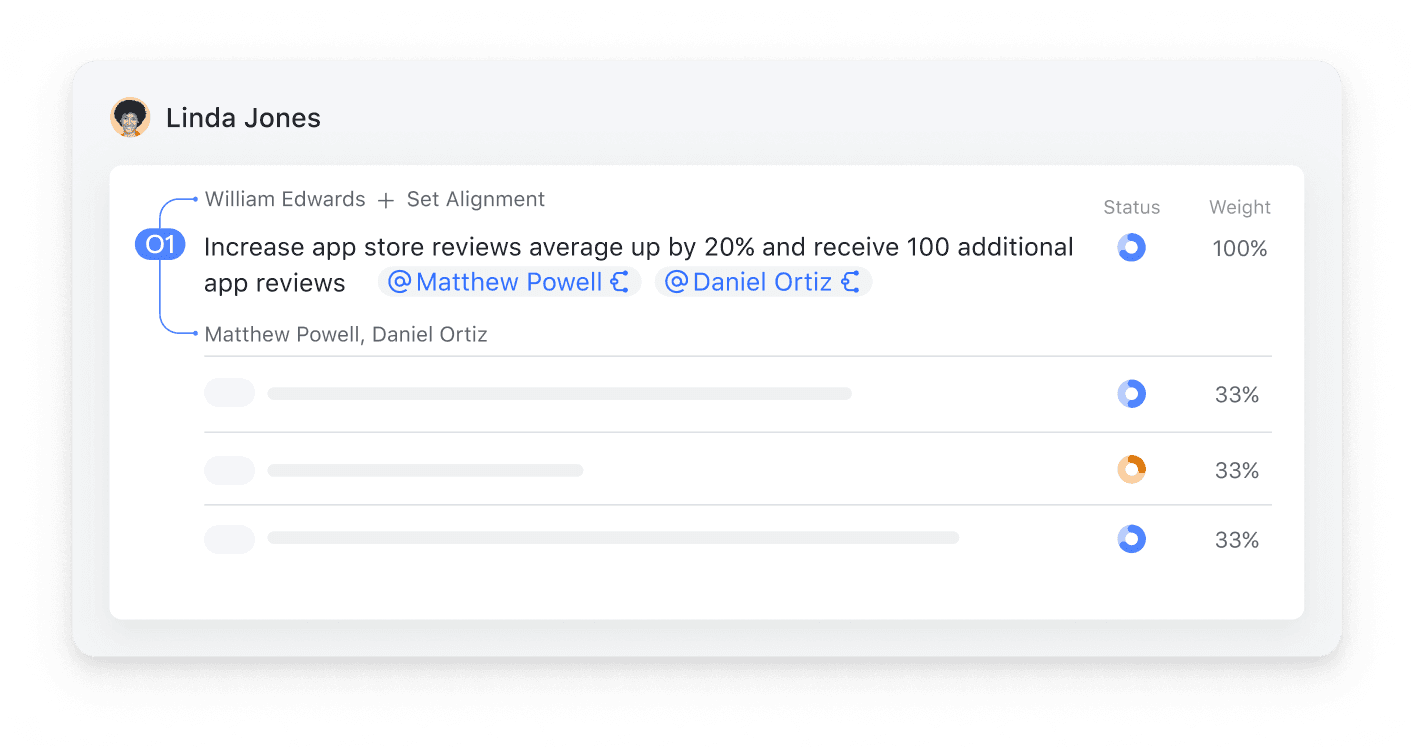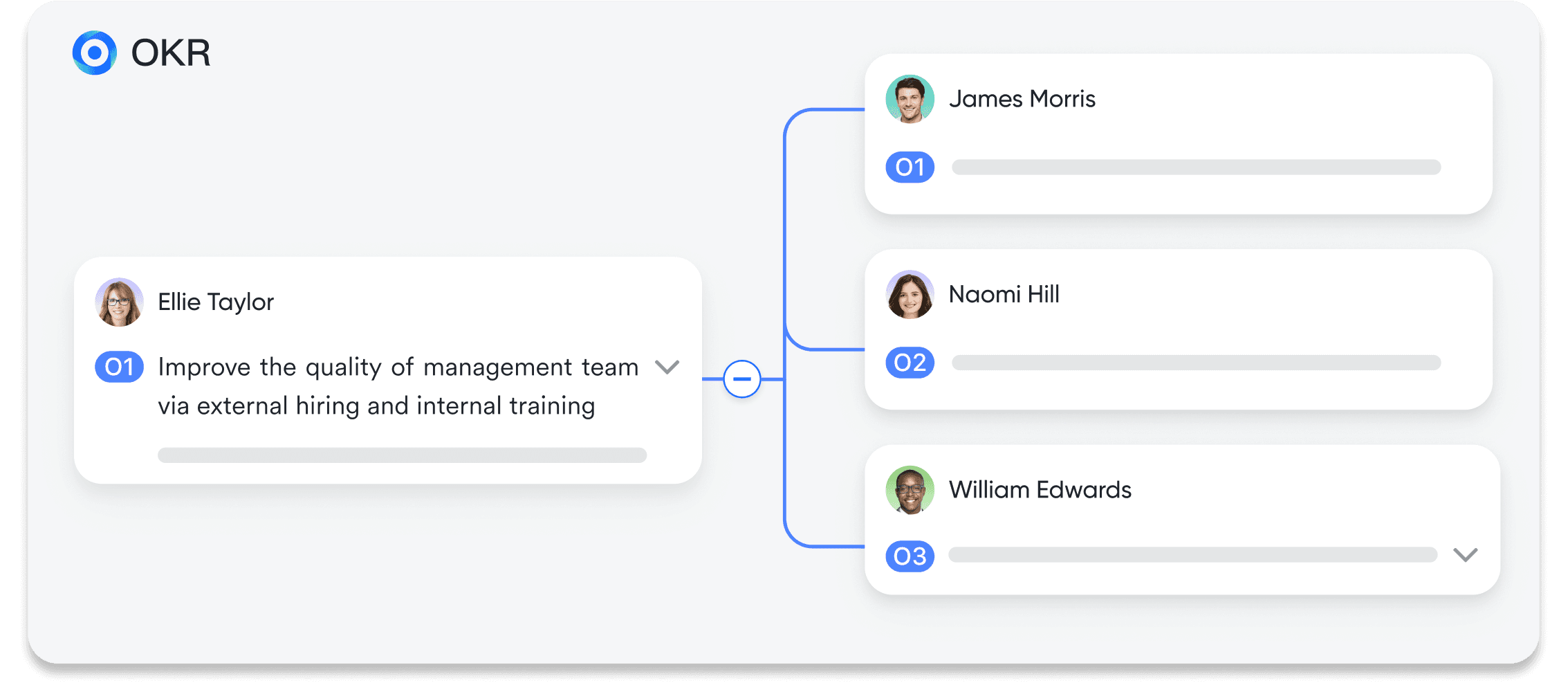Are you looking for a powerful framework to set goals and drive results in your organization? Developing OKR's (Objectives and Key Results) is a highly effective strategy to ensure that each employee's goals align with the broader company vision. In this blog post, we will provide you with a step-by-step guide on how to write effective OKR's and explore the numerous benefits they can bring to your team.
Step 1: Define Clear Objectives
The first step in writing OKR's is to define clear and concise objectives. Objectives should be inspiring and ambitious, providing a sense of direction for your team. They should be aligned with your company's mission and vision, and should answer the question "What do we want to achieve?"
For example, an objective could be "Increase customer satisfaction and loyalty." Other examples of objectives could include:
Expand market share in a specific region
Launch a new product or service
Improve operational efficiency
Step 2: Identify Key Results
Once you have defined your objectives, it's time to identify the key results that will measure your progress towards achieving those objectives. Key results should be specific, measurable, and time-bound. They should answer the question "How will we know when we have achieved our objective?"

Continuing with our example objective of increasing customer satisfaction and loyalty, some key results could be:
Increase Net Promoter Score (NPS) by 10%
Reduce customer churn rate by 15%
Achieve a customer satisfaction rating of 4.5 out of 5
See more practical OKR examples here.
It's important to note that key results should be challenging but achievable. They should stretch your team's capabilities and push them to strive for excellence. It is also important to note the differences between OKRs vs KPIs.
Step 3: Cascade OKR's
OKR's are most effective when they are cascaded throughout the organization. This means that each team and individual should have their own set of OKR's that contribute to the overall company objectives. By aligning individual goals with the company's goals, everyone is working towards a common purpose.

For example, if the company's objective is to increase customer satisfaction and loyalty, the marketing team's OKR's could include:
Increase social media engagement by 20%
Generate 100 new customer reviews
Launch a customer loyalty program
Similarly, the customer support team's OKR's could include:
Reduce average response time to customer inquiries by 20%
Increase first-call resolution rate to 90%
Implement a customer feedback system
By cascading OKR's, you ensure that every team and individual is contributing to the overall success of the company.
Step 4: Regularly Review and Update
OKR's are not set in stone. It's important to regularly review and update them based on the progress and changing priorities of your organization. Weekly or bi-weekly check-ins are recommended to track progress, discuss challenges, and make any necessary adjustments to your OKR's.
During these check-ins, it's important to celebrate achievements, identify areas for improvement, and provide support and resources to help teams overcome obstacles. By regularly reviewing and updating OKR's, you create a culture of continuous learning and improvement within your organization.
Why write effective OKR's?
Now that you understand the steps to write OKR's, let's explore some of the benefits they can bring to your organization:
Focus and Alignment: OKR's provide a clear focus for your team, ensuring that everyone is working towards the same goals. By aligning individual and team objectives with the company's objectives, OKR's create a sense of unity and purpose. This alignment helps to eliminate duplication of effort and ensures that resources are allocated effectively.
Transparency and Accountability: OKR's promote transparency by making goals and progress visible to everyone in the organization. This fosters accountability and encourages collaboration as team members can see how their work contributes to the overall success of the company. Transparent OKR's also create a culture of trust and open communication, where ideas and feedback can be freely shared.
Flexibility and Adaptability: OKR's allow for flexibility and adaptability in a fast-paced business environment. By regularly reviewing and updating OKR's, you can respond to changing market conditions and priorities, ensuring that your goals remain relevant and achievable. This flexibility encourages innovation and enables teams to pivot quickly when necessary.
Motivation and Engagement: OKR's provide a sense of purpose and direction, which can greatly enhance motivation and engagement among team members. Clear objectives and measurable key results create a sense of achievement and progress, driving individuals and teams to perform at their best. When employees see the direct impact of their work on the company's success, they are more motivated to go above and beyond.
In conclusion, writing effective OKR's is a powerful tool for goal setting and driving results in your organization. By following the step-by-step guide outlined in this blog post and leveraging the benefits of OKR's, you can align your team, foster transparency, and check off business objectives. There are also plenty of OKR software (or specific alternatives) that can help speed up the adoption of OKR methodologies within your company.
Remember, OKR's are not just a goal-setting framework; they are a mindset that promotes focus, collaboration, and continuous improvement. So, why not start implementing OKR's in your organization today and unlock the full potential of your team?















